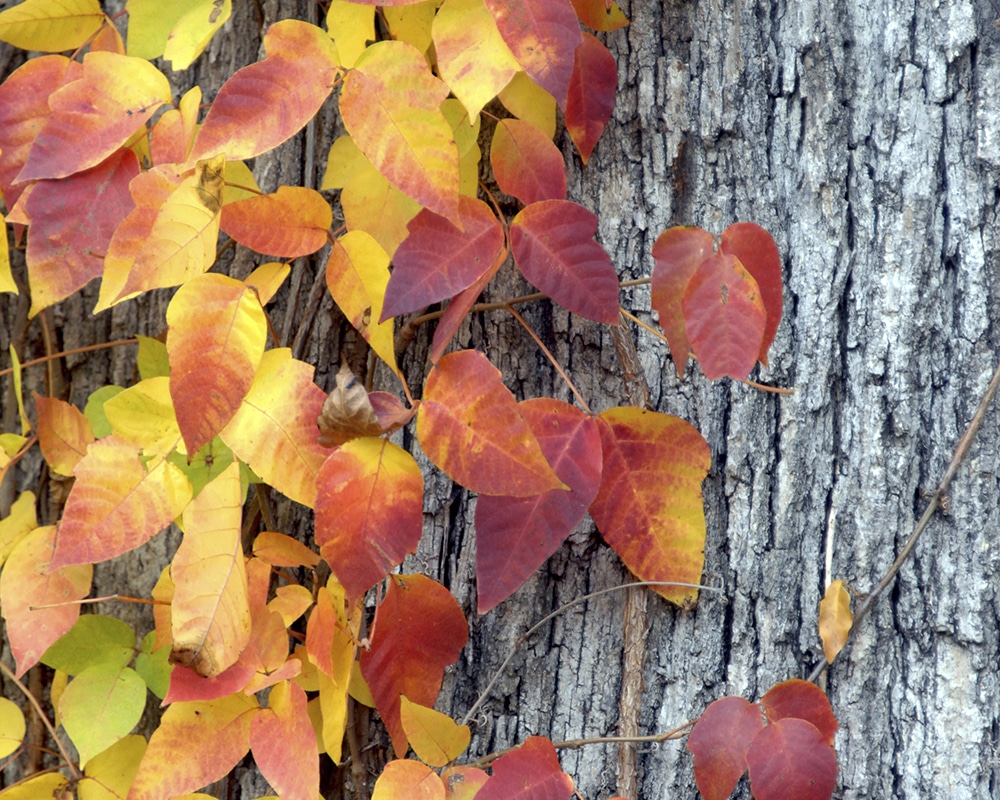Does Poison Ivy Have a Season?

Poison ivy is notorious for causing itchy, blistering rashes, and many wonder whether it has a particular season. Understanding poison ivy's growth patterns and seasonal behaviors can help avoid unwanted encounters and manage exposure effectively.
Poison Ivy Throughout the Year
Poison ivy is a resilient plant that can cause trouble year-round. While its appearance and behavior change with the seasons, the risk of a rash remains constant. The urushiol oil responsible for the rash can be found in all parts of the plant, including leaves, stems, and roots, and can persist even after the plant appears dormant.
Spring and Summer: Peak Growing Season
In spring and summer, poison ivy enters its most active growth phase. The plant produces new leaves, which are shiny and red in spring and turn green as they mature. During these warmer months, poison ivy is at its most potent. Increased outdoor activities during this time also raise the risk of exposure. Gardeners, hikers, and campers are more likely to come into contact with the plant during its peak season, making recognizing and avoiding it essential.
Fall: Changing Colors, Same Risk
As the weather cools in fall, poison ivy leaves change color, turning vibrant shades of red, yellow, and orange before falling off. Despite the plant appearing less threatening, the risk remains. The bare vines and stems still contain urushiol, and fallen leaves can cause a rash if they come into contact with skin. It is a common misconception that poison ivy is harmless once the leaves have fallen. However, the plant's dormant parts remain hazardous.
Winter: Hidden Dangers
Poison ivy may seem dormant in winter, but the threat is far from gone. The bare stems and roots are still capable of causing a reaction. Additionally, urushiol can remain on surfaces such as gardening tools, clothing, and pet fur for a long time. Therefore, it's essential to remain vigilant and practice proper cleaning methods throughout the year. Even during the colder months, outdoor enthusiasts should be cautious and take preventive measures to avoid contact with the plant's dormant parts.
Urushiol: The Persistent Irritant
Urushiol oil, the cause of poison ivy, oak, and sumac rashes, is incredibly persistent. It can stay active on surfaces for years, making it vital to clean anything that may have come into contact with the plant. Even a tiny amount of urushiol, equivalent to the size of a pinhead, can trigger a full-blown allergic reaction in sensitive individuals. This oil is a formidable adversary, requiring diligent efforts to avoid its irritating effects.
Sensitivity to Urushiol
Sensitivity to urushiol varies widely among individuals. Some people may react to minimal exposure, while others may require more contact to develop a rash. This variability underscores the importance of thorough cleaning and awareness, regardless of the season. Individuals who are highly sensitive to urushiol must take extra precautions to avoid exposure and clean any potentially contaminated items.
How to Protect Yourself Year-Round
Given the year-round risk of poison ivy, taking preventative measures and knowing how to treat exposure effectively is crucial. Keeping Tecnu Extreme on hand is an excellent way to manage the risk of poison ivy exposure, no matter the season.
Use Tecnu Extreme for Effective Urushiol Removal
Tecnu Extreme is a powerful solution for removing urushiol oil from the skin. This unique formula is designed to be used as an all-over body wash, making it ideal for use after outdoor activities. During the peak growing season in spring and summer, using Tecnu Extreme in the shower after spending time outdoors can help remove urushiol before a rash develops. Even in fall and winter, when poison ivy appears dormant, using Tecnu Extreme to cleanse your skin after potential exposure will help prevent a rash from developing and allow your skin to begin the natural healing process.
Steps for Using Tecnu Extreme
When you suspect exposure, shower and use Tecnu Extreme to scrub your entire body. Focus on areas that may have come into contact with poison ivy. Make sure to scrub thoroughly to remove any unbonded urushiol oil from your skin. If you still experience itching, follow up with a topical treatment such as Tecnu Rash Relief or Calagel Anti-itch Gel. This comprehensive approach will help minimize the risk of a rash and soothe any irritation that may occur.
Prevent Recontamination with Tecnu Original
To prevent the spread of urushiol and recontamination, clean any clothing, tools, and equipment that may have come into contact with poison ivy. Washing pets that may have brushed against the plant is also important, as they can carry urushiol on their fur. Regularly cleaning these items with Tecnu Original Outdoor Cleanser or similar products will help reduce the risk of secondary exposure and ensure a safer environment.
Poison ivy does not have a specific season—it poses a risk all year long. Understanding its seasonal behaviors and taking appropriate precautions can help you avoid the discomfort and inconvenience of a rash. By staying vigilant and practicing proper cleaning methods, you can enjoy the outdoors without fearing poison ivy.




